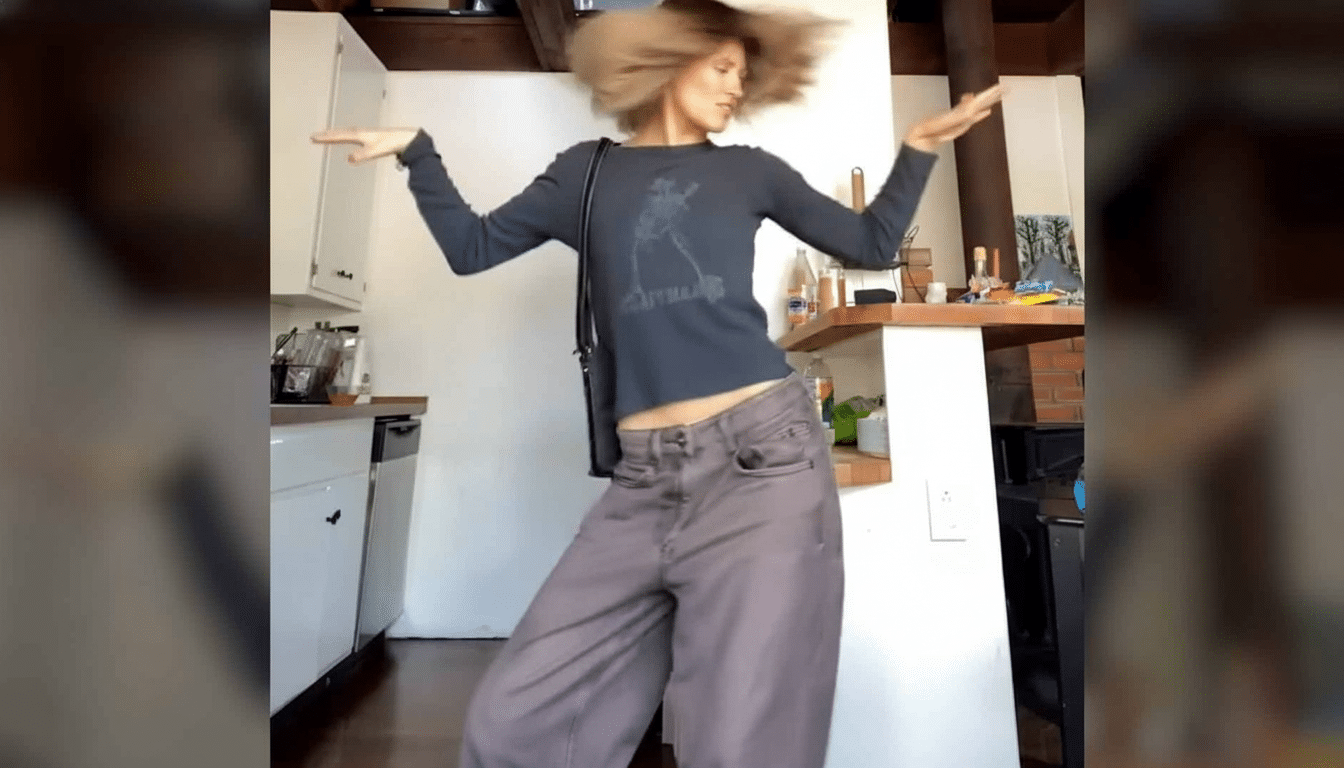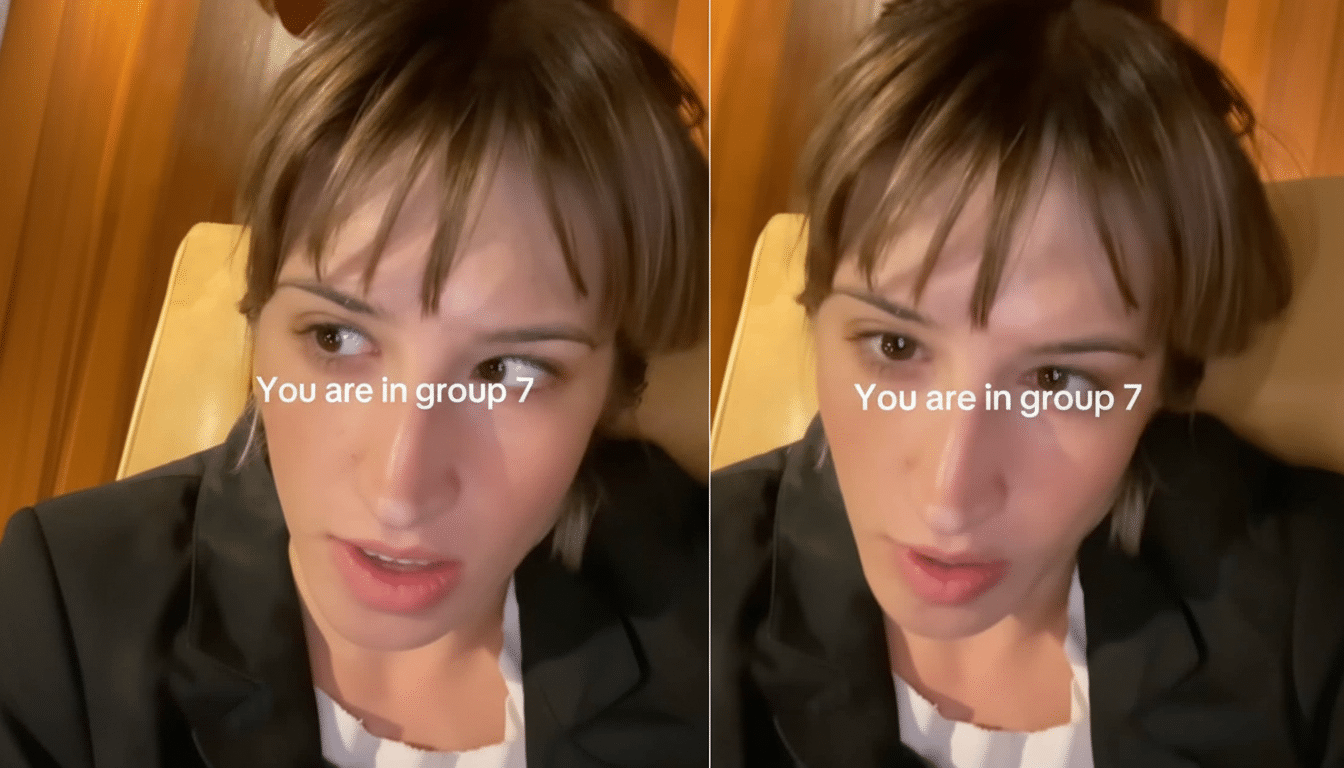If your For You Page suddenly gave you membership in “Group 7,” you’ve met TikTok’s newest inside-joke machine. The meme is easy, catchy and ideal for the app’s recommendation system: an exclusive-sounding club that, paradoxically, everyone can join — and that’s why it works.
What is Group 7 on TikTok and how the meme began
Group 7 started out as a music promo by singer Sophia James for her single “So Unfair”. She shared seven near-identical clips throughout the day. The gist: the one that was on your For You Page first at any given moment placed you into a numbered “group.” The seventh drop — presented as the final frontier, the rarest of them all — was soon established as the holy grail.

Users leaned into the bit. Comments like “Group 7 supremacy” took off in engagement, and the final post reached over 17 million views by on-platform counts and about 2.3 million likes. A top comment bestowing on Group 7 the title of “most elite” collected hundreds of thousands of likes, ensuring the joke’s order.
How the Group 7 meme spread across TikTok quickly
TikTok handled the rest once Group 7 had a firm grip. The tag has given birth to tens of thousands of uploads — more than 55,000 per one on-platform tally — including dance edits set to unofficial “Group 7 anthems” and an explainer in which creators dramatically pledge their allegiance before breaking down the trend for newbies.
“Creator Room” cut that structure, and creators followed suit with their own takes: seven-part skits, photo dumps or outfit videos that assign viewers by whichever clip the algorithm serves. Brands as well as micro-creators picked up the “If you’re seeing this, you’re Group 7” captions to exploit the same dynamic: make viewers feel chosen, then invite them to prove it — in the form of comments.
Why the Group 7 meme works on TikTok’s algorithm
Group 7 is platform psychology 101. TikTok’s detailed public guidance on recommendations suggests that strong signals include watch time, rewatched content, shares and comments. It creates a kind of faux “circle the wagons”-style clubby culture that incentivizes them all: everyone watches to the end to “qualify,” comments (or lurks within earshot of people who comment) to claim status, shares with friends in some effort to pull others under their big funny spoiler umbrella.
There is also the power of artificial scarcity. By establishing the seventh post as being rare — and saving it for last — the trend bakes in FOMO. Behavioral scientists tend to call this social sorting: low-friction identity labels that attach themselves like Velcro and deliver a quick hit of belonging. It’s the same engine that powers “What side of TikTok are you on?” discourse and birth-month “team” edits that spark comment wars.

The format quietly optimizes for iteration, as well. Posting near-duplicates allows the algorithm to make multiple throws without tiring out viewers; if one clip stalls, another can take off. Producers in social media marketing dub this “parallel testing,” and it has become common on the short-form platforms.
What Group 7 reveals about modern music promotion
For an artist, Group 7 offers a case study in what might be called discovery-first marketing. But instead of really being a challenge, the meme is just attaching a simple participation loop to a song hook. Industry researchers at Luminate have said that short-form video is Gen Z’s number-one discovery channel, and we in trade press have spent months connecting the TikTok dots between virality and double-digit streaming lifts inside 24 hours after a sound catches.
James is making nods that she’s getting in on the act, even teasing an offline meet-up of self-identified Group 7 members in London — a savvy way to turn fleeting views into community. These touchpoints count: moments that link social content to real-life experiences help you listen longer than a fleeting viral spike does, according to IFPI’s global music insights.
How to spot or join the Group 7 trend on TikTok
You may identify Group 7 posts by captions announcing your membership in the group as soon as you see them, typically with the “So Unfair” sound. To participate, creators share a series of comparable clips and tell viewers to comment their group number. Duets and stitches extend the loop as fans show they “made it” to seven.
If you are just a-scannin’ through, you will see differences: “Which group do you belong to?” polls, montage edits with seven frames and joke conspiracies about what counts as a “true” Group 7 member. None of it is official — and that’s the whole point. The meme works because the rules are loose enough to remix but precise enough to feel time-stamped enough for a club.
The bottom line on TikTok’s Group 7 trend and impact
Group 7 packages up platform-native mechanics — scarcity, the attention-seizing “identity” label and rapid iteration on a theme — into a bite-size meme that is selling a jingle not as an ad but just because. The “most elite” club on TikTok is not exclusive at all; it’s a frictionless on-ramp to get in, and getting in is the product.

